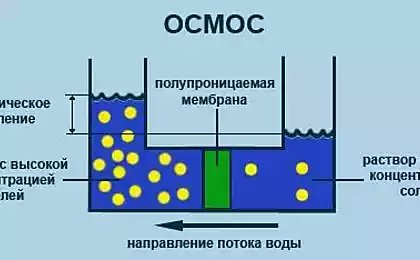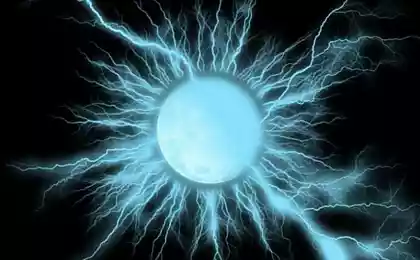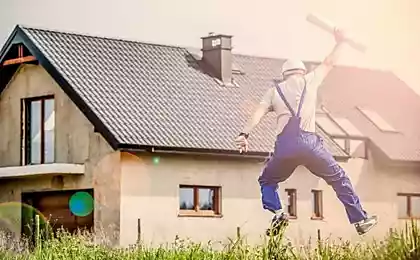212
How to block the water if the ball tap jammed
Imagine that you have leaked a mixer, and close the ball tap, blocking the water supply, you are not able to. How do you avoid the flood?

The situation described is hardly rare. Ball valves have become widespread and today no riser of cold or hot water can do without them.
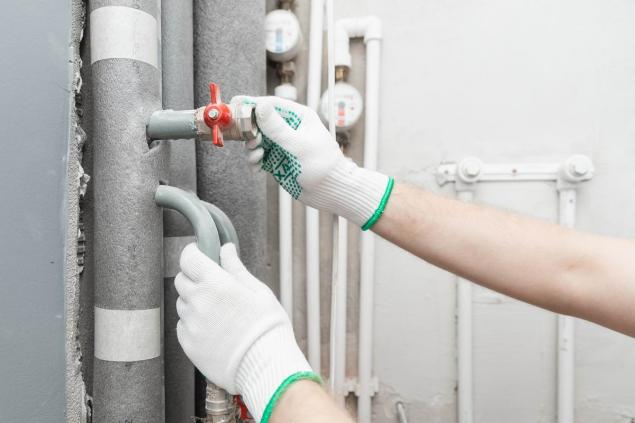
We understand together why such stories happen, how to avoid them and what to do if the crane still jammed.
How to block water What is a ball valve This is a common type of shut-off valve, the main element of which resembles a sphere with a through hole. In the open position, the axis of the hole coincides with the axis of the pipeline, and to close it is necessary to rotate the rod by 90 °, while the axis of the hole becomes perpendicular to the direction of the flow.

Fluoroplastic rings are used as a sealant. Simple, compact and convenient device. But, as usual, its disadvantages are a direct extension of its merits.

First, ball cranes do not tolerate downtime. With a long absence of rotations of the mechanism on the surface of the ball, salt deposits are formed. As a result, the crane will turn with great effort or not at all (jamming).

Secondly, this design is quite sensitive to impurities in water. Sand particles damage the polished surface of the ball, which subsequently causes leakage.
All this imposes particularly stringent requirements on the materials from which the closing device is made. This is where we get to the root of the problem. The fact is that in the pursuit of savings, manufacturers often densely replace high-quality brass elements with cheap ones made of fragile silumin.
It happens that the crane looks made of yellow metal, but in fact simple steel with a thin layer of spraying. The price of such a product can be no less, and reliability and service life will be many times less.

Before going to the plumbing store, be sure to bring a small magnet with you. The quality ball inside the crane should not be magnetized. If this is not the case, the economy mechanism is made of conventional corrosion-prone metal.
What to do if the handle of the ball valve does not turn? Most importantly, do not grab the hammer and twist the “butterfly” with pliers. In 9 cases out of 10, it will only cause it to break.
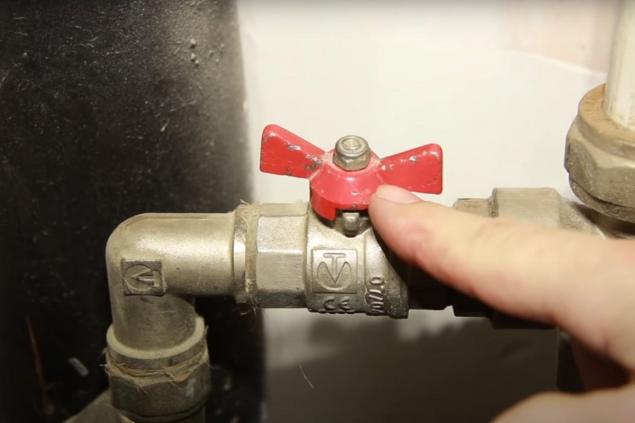
First, unscrew the top nut and remove the "butterfly".

Underneath it is a nut pressing a fluoroplastic oil.

She needs a little let go. This will weaken the dried omentum.

After that, arm yourself with a suitable tool (a movable key will fit) so that you can rotate the rod holding the shut-off ball.

Do this carefully, each time slightly shifting the rod clockwise and counterclockwise.
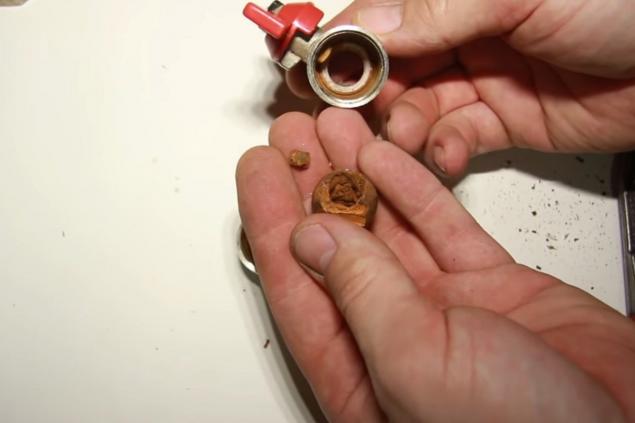
If you open the tap in one fell swoop, you can simply split the ball at the connection point with the rod. Therefore, increase the amplitude gradually.

After the ball tap with the key will be completely closed, return the "butterfly" in place and make sure that its groove cover (pictured left) touches the stop (right).
 16
16
After that, tighten the locking nut, dry the rod with a napkin and see if there is a leak. If everything is dry, put the pen back in place and fix it with a nut.
As you can see, the operation is not very complicated, even those who can handle plumbing only for “you”. For prevention, do not forget to turn the crane handle several times every 2 months (you can more often) to extreme positions to clear the mechanism of salt deposits.

The situation described is hardly rare. Ball valves have become widespread and today no riser of cold or hot water can do without them.

We understand together why such stories happen, how to avoid them and what to do if the crane still jammed.
How to block water What is a ball valve This is a common type of shut-off valve, the main element of which resembles a sphere with a through hole. In the open position, the axis of the hole coincides with the axis of the pipeline, and to close it is necessary to rotate the rod by 90 °, while the axis of the hole becomes perpendicular to the direction of the flow.

Fluoroplastic rings are used as a sealant. Simple, compact and convenient device. But, as usual, its disadvantages are a direct extension of its merits.

First, ball cranes do not tolerate downtime. With a long absence of rotations of the mechanism on the surface of the ball, salt deposits are formed. As a result, the crane will turn with great effort or not at all (jamming).

Secondly, this design is quite sensitive to impurities in water. Sand particles damage the polished surface of the ball, which subsequently causes leakage.
All this imposes particularly stringent requirements on the materials from which the closing device is made. This is where we get to the root of the problem. The fact is that in the pursuit of savings, manufacturers often densely replace high-quality brass elements with cheap ones made of fragile silumin.
It happens that the crane looks made of yellow metal, but in fact simple steel with a thin layer of spraying. The price of such a product can be no less, and reliability and service life will be many times less.

Before going to the plumbing store, be sure to bring a small magnet with you. The quality ball inside the crane should not be magnetized. If this is not the case, the economy mechanism is made of conventional corrosion-prone metal.
What to do if the handle of the ball valve does not turn? Most importantly, do not grab the hammer and twist the “butterfly” with pliers. In 9 cases out of 10, it will only cause it to break.

First, unscrew the top nut and remove the "butterfly".

Underneath it is a nut pressing a fluoroplastic oil.

She needs a little let go. This will weaken the dried omentum.

After that, arm yourself with a suitable tool (a movable key will fit) so that you can rotate the rod holding the shut-off ball.

Do this carefully, each time slightly shifting the rod clockwise and counterclockwise.

If you open the tap in one fell swoop, you can simply split the ball at the connection point with the rod. Therefore, increase the amplitude gradually.

After the ball tap with the key will be completely closed, return the "butterfly" in place and make sure that its groove cover (pictured left) touches the stop (right).
 16
16After that, tighten the locking nut, dry the rod with a napkin and see if there is a leak. If everything is dry, put the pen back in place and fix it with a nut.
As you can see, the operation is not very complicated, even those who can handle plumbing only for “you”. For prevention, do not forget to turn the crane handle several times every 2 months (you can more often) to extreme positions to clear the mechanism of salt deposits.


